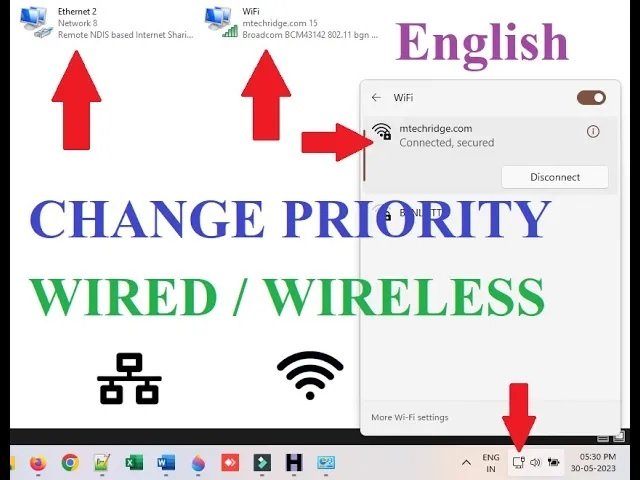Changing the priority of a wired or wireless network adapter can be useful in several scenarios:
Network Performance: By adjusting the priority, you can allocate more bandwidth and resources to the preferred network adapter. This can help optimize network performance for specific applications or tasks that require a stable and high-speed connection.
Multiple Network Connections: If your device is connected to both wired and wireless networks simultaneously, changing the priority allows you to specify which network should be used as the primary connection. This can be helpful when you want to prioritize a faster or more reliable network over others.
Network Troubleshooting: Changing the priority can be a troubleshooting step to resolve network connectivity issues. By prioritizing one adapter over others, you can isolate potential problems and test different network configurations to identify the source of the issue.
Load Balancing: In some cases, you may have multiple network adapters for load balancing purposes, especially in enterprise environments. Changing the priority can help distribute network traffic more evenly across different adapters to achieve better overall performance.
VPN or Proxy Configuration: If you use virtual private networks (VPNs) or proxies, changing the priority can determine which network connection is used for routing traffic through the VPN or proxy server. This allows you to control which network adapter is used for secure or anonymized browsing.
To change the priority of a wired or wireless network adapter, you can use the following steps:
Open the "Network and Sharing Center" by searching for it in the Start menu or Control Panel.
Select "Change adapter settings" in the Network and Sharing Center.
View the list of network connections.
Right-click on the network adapter whose priority you want to change and choose "Properties" from the context menu.
In the Properties window, locate and select "Internet Protocol Version 4 (TCP/IPv4)" or "Internet Protocol Version 6 (TCP/IPv6)" depending on your network configuration.
Click on the "Properties" button.
In the next window, click on the "Advanced" button.
In the Advanced TCP/IP settings, go to the "IP Settings" or "Advanced Settings" tab.
Look for an option called "Interface metric" or "Automatic metric" and uncheck it if necessary.
Enter a numeric value in the "Interface metric" field to assign a priority to the network adapter. Lower values indicate higher priority.
Click "OK" to save the changes and close all the open windows.
Restart your computer for the changes to take effect.








